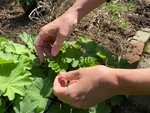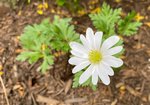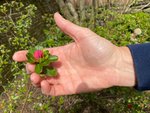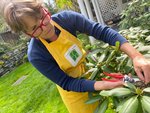This is the second in a series of stories offering readers tips about gardening and the natural world from the staff and board members of the Chestnut Hill Garden District Fund, a nonprofit …
This item is available in full to subscribers.
We have recently launched a new and improved website. To continue reading, you will need to either log into your subscriber account, or purchase a new subscription.
If you are a digital subscriber with an active subscription, then you already have an account here. Just reset your password if you've not yet logged in to your account on this new site.
If you are a current print subscriber, you can set up a free website account by clicking here.
Otherwise, click here to view your options for subscribing.
Please log in to continue |









This is the second in a series of stories offering readers tips about gardening and the natural world from the staff and board members of the Chestnut Hill Garden District Fund, a nonprofit organization with a mission of harnessing the beauty of flowers to beautify Germantown Avenue.
For gardeners, like everyone else, spring is a time of hope and renewal. After a long dark winter, we’re hungry to be outside, let the sun warm on our backs, feel soil between our fingers, hear birds singing, and most of all, see new leaves and blossoms emerge from buds on the trees, shrubs, and flowers that we’ve helped nurture.
But gardeners also understand a less convenient truth. To get the most out of our gardens and lawns, the arrival of spring means there’s plenty of work that needs to get done. The good news? It’s satisfying work, and if you get the basics right in late April and May, the payoff you’ll earn is glorious and will last through the summer and into the fall.
We’ve boiled it down to a few basic spring tasks and tips that apply to almost any garden or level of experience.
Prune your hydrangeas and roses
The question I’m asked more than any other is ‘How do I care for my hydrangeas?” They’re flagship garden plants in the Northeast, with varieties that bloom spectacularly from June to the fall, some adding rare shades of blue. Now is the time to prune your hydrangeas and other shrubs that flower in summer or fall, cutting back the stems to a live bud. Roses are another Hill mainstay, although they can be fussier. If you haven’t done so already, prune your roses soon, then fertilize them and mound them up with mulch. Cut back each rose stem until all the dead wood is gone and you’ve reached green growth. If you have rhododendrons, azaleas, or other spring-flowering shrubs, don’t prune them until after they’ve bloomed.
Plant climbers
Spring is the time to plant Clematis, Wisteria, and other lovely, hardy climbing plants. Make sure to give climbers plenty of space and good soil. Both are often lacking near walls, so put some effort into digging a wide, deep hole and filling it with the compost-rich soil they need.
Plant perennials
It’s tempting to buy and plant annuals in the spring, but it’s really too early. They’re on sale now, but try to wait until after Mother’s Day. This is the time to plant perennials, such as fragrant lavenders (a good variety for now is ‘Phenomenal’), hastas, heucheras, lady’s mantles, and Epimedium.
“Harden off” plants that have wintered indoors
If you’ve been keeping plants indoors that you hope to plant in your garden or put on your patio - or if you’ve bought annuals a little prematurely - it’s time to transition them gradually to spring weather by doing what gardeners call “hardening off.” Acclimate them by bringing them out into the dappled sun during the day for a week or two.
Mulch correctly
Mulching should be done by the end of May. I recommend undyed, double-shredded mulch; it decomposes more readily, releasing nutrients as it does so. A layer of mulch about 2 to 3 inches thick should be enough.
Get your staking done early
If you’ve got perennials such as peonies that will need support as they grow, stake them now before they get to about half their full height. You’ll regret it if you wait - it’s almost impossible to support them properly (or attractively) once they’re too tall.
Plant containers
It’s a great time to plan and plant pots (gardeners call them containers). It’s so much fun. I do them seasonally. After planting spring containers, I redo them in the summer, fall, and winter. If you plant annuals in the spring and they start to fade or get leggy, rip them out and redo it.
Mow your lawn, but not too short
Spring is the time that most people take out their mowers for the first time. Resist the temptation to cut the grass too short. The rule of thumb is no shorter than 3 inches. That’s longer than most people feel comfortable with, but keeping it that long prevents weed seeds from falling in and allows grass to outcompete weeds that might begin to grow.
Prepare for birds
Many migratory bird species come through the Philadelphia area on their way north in the spring. Make your garden more bird-friendly by providing water in a birdbath and putting out nesting boxes and feeders - unless there’s an outdoor cat in your neighborhood, of course.